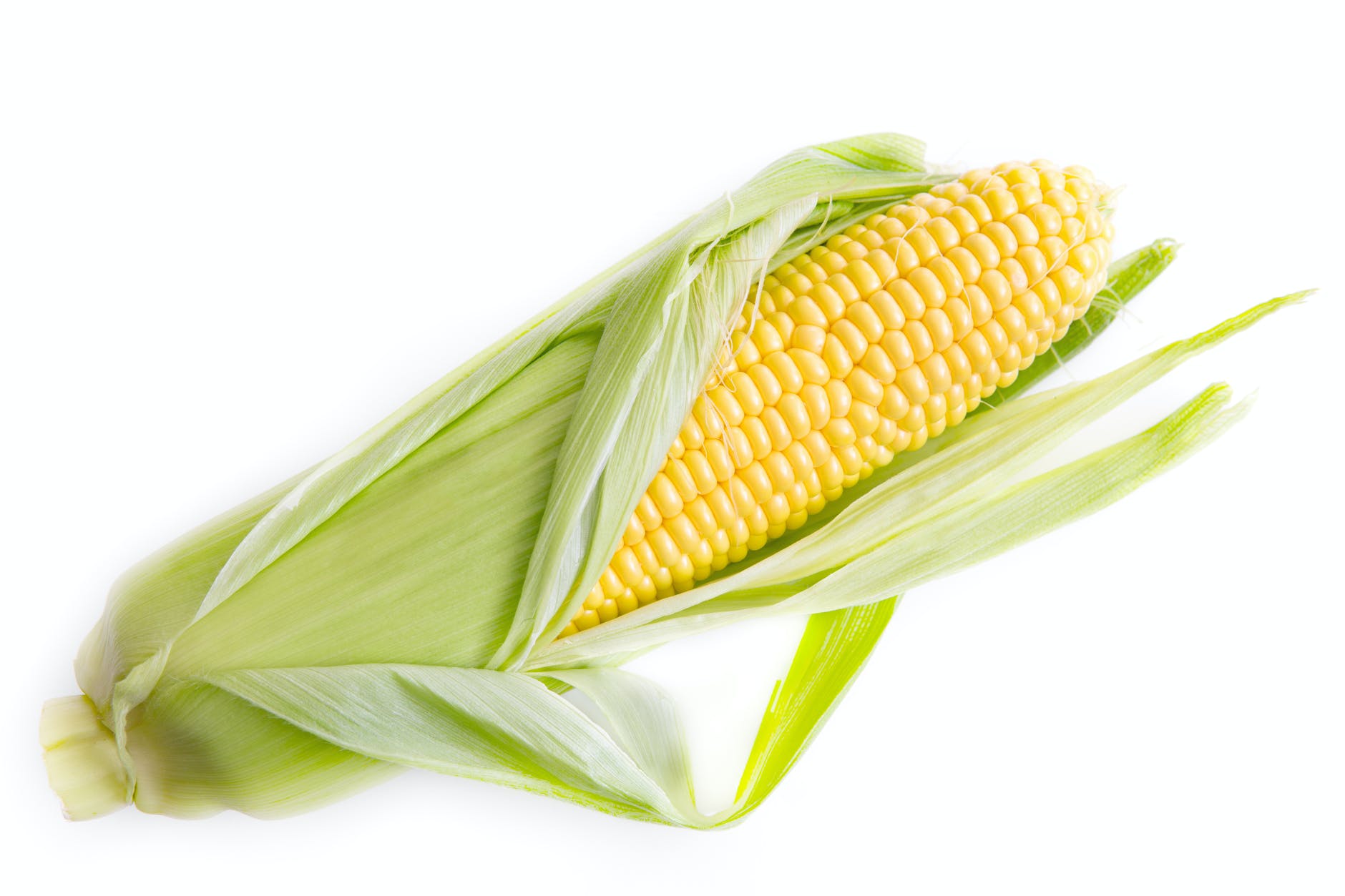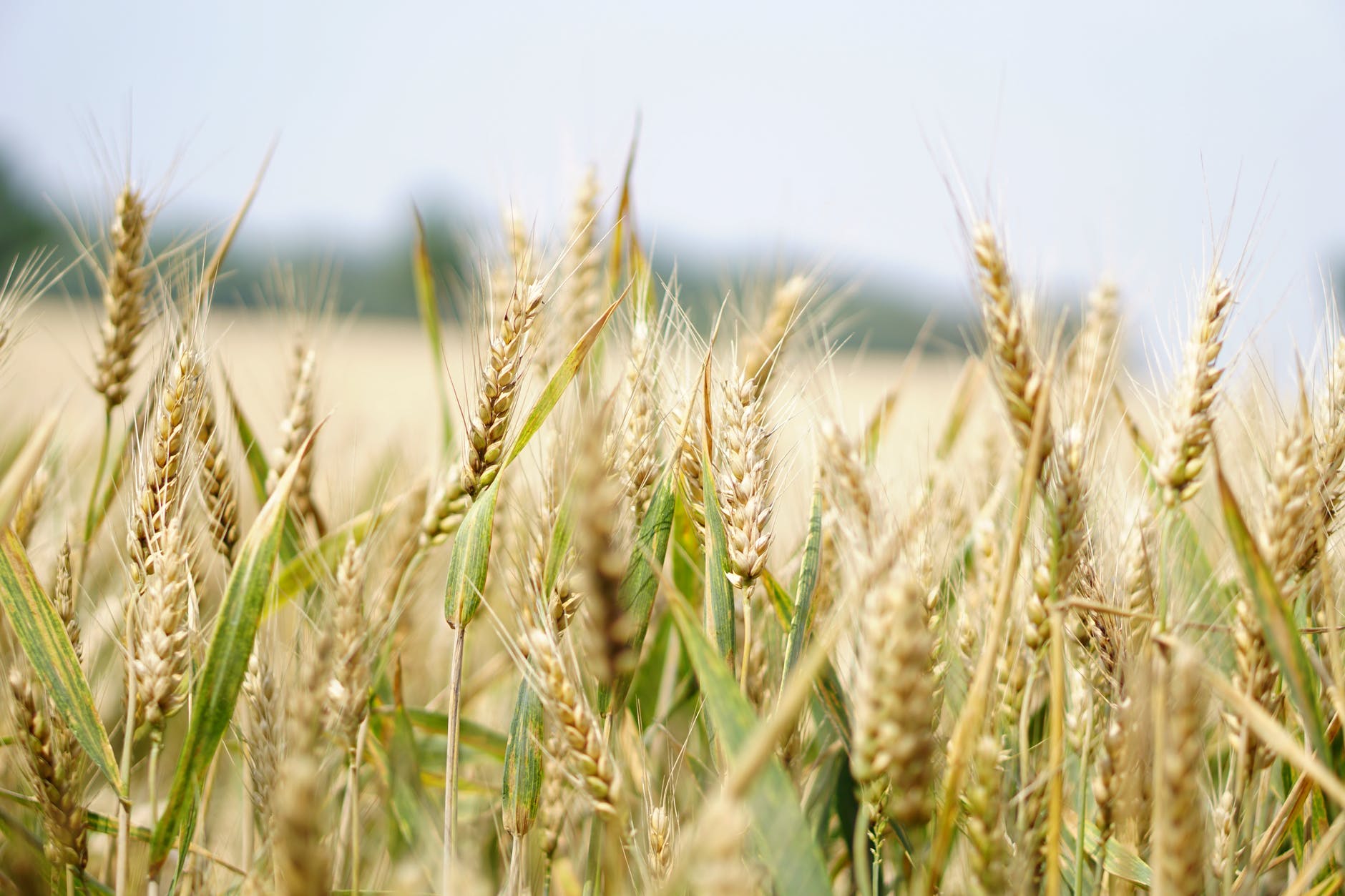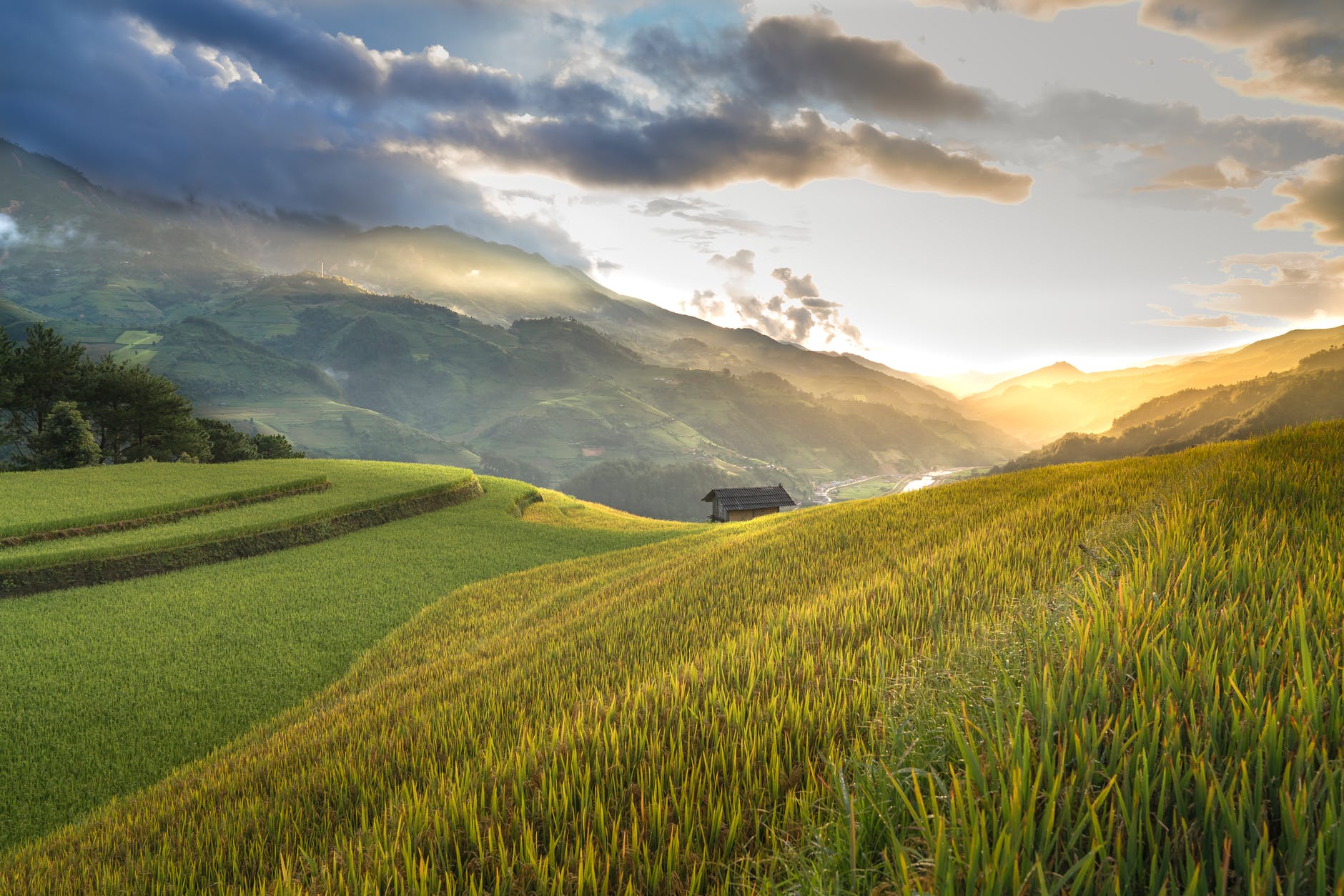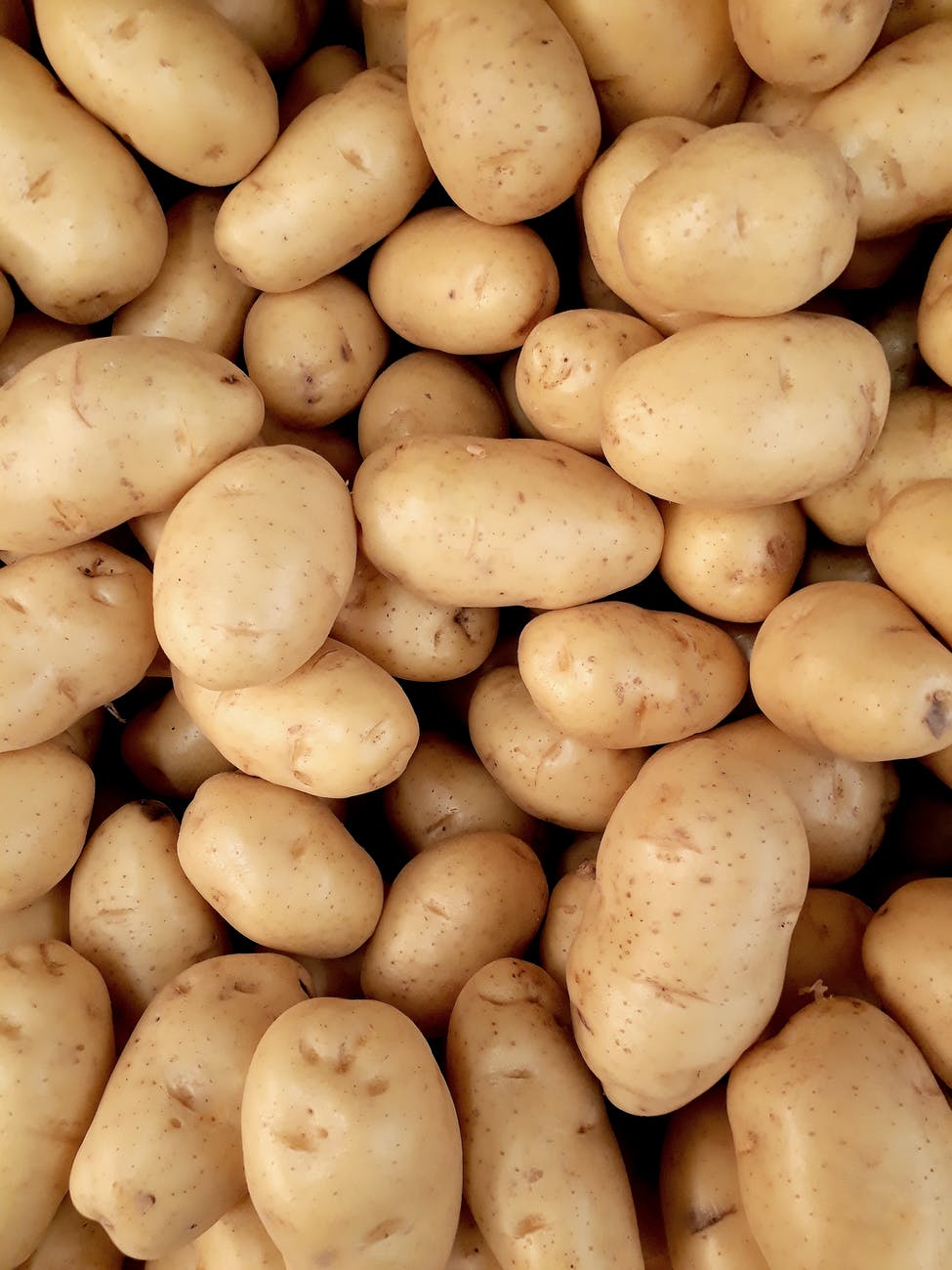A crop is cultivated plant that is grown on a large scale commercially, especially a cereal, fruit, or vegetable. A lot of something produced during a particular cycle. Most crops are harvested as food for humans or fodder for livestock. Some crops are gathered from the wild. 10 most important crops in the world are as follows.
1.Corn

Corn is the most produced grain in the world. It’s the seed of a plant in the grass family, native to Central America but grown in countless varieties worldwide. It’s a staple food for the majority of sub-Saharan Africa, and is a great source of carbohydrates, protein, iron, vitamin B, and minerals. It’s rich in antioxidants. Corn is a starchy vegetable and cereal grain that has been eaten all over the world for centuries. Corn is also known as maize. It is being used more and more for ethanol. Corn is typically yellow but comes in a variety of other colors, such as red, orange, purple, blue, white, and black. A greater weight of maize is produced each year than any other grain, U.S. is the world’s largest maize producer. In the United States the colourful variegated strains known as Indian corn are traditionally used in autumn harvest decorations.
It is a starchy vegetable that comes as kernels on a cob, covered by a husk. Corn is primarily composed of carbs. Popcorn and sweet corn are popular varieties. Whole-grain foods may have several health benefits, including reduced risk of heart disease and type 2 diabetes and high blood pressure. Dietary intake of antioxidants, most notably carotenoids like zeaxanthin and lutein, may boost eye health. The fiber in whole grains can support healthy digestion in various ways. Some evidence suggests that whole grains can help reduce inflammation. Some health benefits linked to fiber may help lower your risk of cancer. 1-ounce (28-gram) serving of whole grains was linked to a 5% lower risk of death. The six major types of maize are dent corn, flint corn, pod corn, popcorn, flour corn, and sweet corn. It’s a key ingredient in baked goods, pastas, noodles, couscous, bulgur and semolina.
- Wheat

Wheat covers more of the earth than any other crop. It Grown all over the world, wheat covers more of the earth’s surface than any other cereal crop. It’s a resilient crop, growing in the dry and cold climates where rice and corn cannot. Botanically, the wheat kernel is a type of fruit called a caryopsis. Wheat is grown on more land area than any other food crop. Global demand for wheat is increasing due to the unique viscoelastic and adhesive properties of gluten proteins, which facilitate the production of processed foods, whose consumption is increasing as a result of the worldwide industrialization process and the westernization of the diet. Wheat is a grass widely cultivated for its seed, a cereal grain which is a worldwide staple food. As one of the first grains to be domesticated, modern wheat developed from cultivation starting in the middle East about 9-11,000 years ago in the fertile crescent of the middle east.
Wheat is one of the oldest and most important of the cereal crops. Whole-grain wheat can be a rich source of various antioxidants, vitamins, minerals, and fiber. The health effects of starch mainly depend on its digestibility, which determines its effect on blood sugar levels. Wheat is the leading source of vegetable protein for humans worldwide. Enriched wheat flour may be a good source of iron, thiamine, niacin, calcium, and vitamin B6. Wheat is an important source of carbohydrates. It has a protein content of about 13%, which is relatively high compared to other major cereals but relatively low in protein quality for supplying essential amino acids. The most important are common wheat used to make bread; durum wheat used in making pasta such as spaghetti and macaroni; and club wheat , a softer type, used for cake, crackers, cookies, pastries, and flours. Additionally, some wheat is used by industry for the production of starch, paste, malt, dextrose, gluten, alcohol, and other products.
- Rice

Rice may be even more important than corn as a food crop, since corn is used for other purposes outside consumption. Rice is the staple food of over half the world’s population. It is the predominant dietary energy source for 17 countries in Asia and the Pacific, 9 countries in North and South America and 8 countries in Africa. Thus, rice is the source of more than 1/5th of all calories consumed by humans. It may also be the thirstiest crop. According to the U.N. farmers need at least 2,000 liters of water to make one kilogram of rice. It is the agricultural commodity with the third-highest worldwide production. Rice cultivation is well-suited to countries and regions with low labor costs and high rainfall, as it is labor-intensive to cultivate and requires ample water. A detailed analysis of nutrient content of rice suggests that the nutrition value of rice varies based on a number of factors. It depends on the strain of rice, such as white, brown, red, and black (or purple) varieties having different prevalence across world regions. It also depends on nutrient quality of the soil rice is grown in, whether and how the rice is polished or processed, the manner it is enriched, and how it is prepared before consumption.
Rice (Oryza sativa) is one of the oldest cereal grains in the world, and people have grown it for at least 5,000 years. 90% of the world’s rice comes from Asia. Brown rice contains a higher amount of dietary fiber than white rice. However, rice can be grown practically anywhere, even on a steep hill or mountain area with the use of water-controlling terrace systems. The rice plant can grow to 1–1.8 m (3 ft 3 in–5 ft 11 in) tall, occasionally more depending on the variety and soil fertility. The leaves are long and flattened and are borne on hollow stems. The fibrous root system is often broad and spreading. The panicle, or inflorescence , is made up of spikelets bearing flowers that produce the fruit, or grain. Rice yields vary considerably, ranging from 700 to 4,000 kilograms per hectare (600 to 3,500 pounds per acre). Rice provides 20% of the world’s dietary energy supply, while wheat supplies 19% and maize (corn) 5%. Types of rice are
1.Long grains have a slender kernel over four times as long as they are wide. When cooked, long grain rice stays separate and fluffy (e.g., Jasmine and Basmati rice).
2.Medium grains have a shorter, wider kernel, yielding a tender and semi-sticky consistency when cooked (e.g., Arborio rice).
3.Short grains have a kernel only twice as long as they are wide, and yield the stickiest texture when cooked (e.g., “sushi” rice).
- Potatoes

Potatoes are the number one non-grain food product. Potatoes are edible tubers, available worldwide and all year long. They are relatively cheap to grow, rich in nutrients, and they can make a delicious treat. Originally grown in the Andes, the Spanish introduced Europe to the potato in the 16th century and the starchy crop hasn’t looked back since. China is now the largest potato-producer worldwide. The potato is a root vegetable native to the Americas, a starchy tuber of the plant Solanum tuberosum. Wild potato species, originating in modern-day Peru, can be found throughout the Americas, from Canada to southern Chile. potatoes were domesticated approximately 7,000–10,000 years ago. There are now over 5,000 different types of potatoes. They are now the biggest vegetable crop in the United States (U.S.), where the average person eats 55 pounds, or 25 kilograms (kg) of potatoes every year. It remains an essential crop in Europe, especially Northern and Eastern Europe, where per capita production is still the highest in the world. Potato plants are herbaceous perennials that grow about 60 cm (24 in) high, depending on variety, with the leaves dying back after flowering, fruiting and tuber formation. There are about 5,000 potato varieties worldwide.
Dozens of potato cultivars have been selectively bred specifically for their skin or, more commonly, flesh color, including gold, red, and blue varieties. A raw potato is 79% water, 17% carbohydrates (88% is starch), 2% protein, and contains negligible fat. A raw potato provides 77 kilocalories. Potatoes might help reduce inflammation and constipation. Potatoes contain important nutrients, even when cooked, that can benefit human health in various ways. The iron, phosphorous, calcium, magnesium, and zinc in potatoes all help the body to build and maintain bone structure and strength. Potassium, calcium, and magnesium are all present in the potato. These have been found to decrease blood pressure naturally. A higher intake of potassium and a lower intake of sodium to a reduced risk of all-cause mortality and heart disease. Potatoes contain folate. Folate plays a role in DNA synthesis and repair, and so it prevents many types of cancer cells from forming due to mutations in the DNA. Dietary fibers are commonly recognized as important factors in weight management and weight loss. Vitamin C works as an antioxidant to help prevent damage caused by the sun, pollution, and smoke. Vitamin C also helps collagen smooth wrinkles and improve overall skin texture.
5.Cassava
Cassava is a root vegetable widely consumed in developing countries. Cassava also called manioc, mandioca, or yuca, tuberous edible plant of the spurge family (Euphorbiaceae) from the American tropics. It is a perennial plant, cassava is extensively cultivated as an annual crop in tropical and subtropical regions for its edible starchy tuberous root, a major source of carbohydrates. It provides some important nutrients and resistant starch. In the humid and sub-humid areas of tropical Africa, it is either a primary staple food or a secondary costaple. The most commonly consumed part of cassava is the root, which is very versatile. One important note is that cassava root must be cooked before it is eaten. Cassava’s importance in Africa and South America can not be overstated. As a drought-resistant crop that does well in poor soils, cassava is a starch-heavy lifesaver for low-income areas.
Cassava eaters know that the roots and leaves must be cooked in order to lose that toxic level of cyanogenic glucosides. Boiled cassava root also contains small amounts of iron, vitamin C and niacin. Consuming high-calorie foods on a regular basis is associated with weight gain and obesity. Cassava may be dangerous if consumed raw, in large amounts or when it is prepared improperly. This is because raw cassava contains chemicals called cyanogenic glycosides, which can release cyanide in the body when consumed. Many people in these countries suffer from protein deficiencies and depend on cassava as a major source of calories. It is used for food, animal feed, and industrial purposes. It is providing a basic diet for over half a billion people. Cassava is classified as either sweet or bitter.
- Soybeans
Soybeans are members of the pea (legume) family of vegetables. They are an important component of Asian diets and have been consumed for thousands of years. Today, they are mainly grown in Asia and South and North America. Soybeans are a globally important crop, providing oil and protein. The soybean is native to East Asia. Soybean products, such as textured vegetable protein (TVP), are ingredients in many meat and dairy substitutes. Soybeans are among the best sources of plant-based protein. Soy beans contain significant amounts of phytic acid, dietary minerals and B vitamins. 100 grams of raw soybeans supply 446 calories and are 9% water, 30% carbohydrates, 20% total fat and 36% protein (table). The protein content of soybeans is 36–56% of the dry weight. Soybeans are a rich source of essential nutrients, providing in a 100 gram serving high contents of the Daily Value (DV) especially for protein (36% DV), dietary fiber (37%), iron (121%), manganese (120%), phosphorus (101%) and several B vitamins, including folate (94%) (table). The fat content is approximately 18% of the dry weight mainly polyunsaturated and monounsaturated fatty acids, with small amounts of saturated fat.
High contents also exist for vitamin K, magnesium, zinc and potassium (table). Soybeans contain antioxidants and phytonutrients that are linked to various health benefits. Consumption of soy protein has been linked with a modest decrease in cholesterol levels. Soy offers a ‘complete’ protein profile. Soybeans also contain high levels of protease inhibitors. The Protein Digestibility Corrected Amino Acid Score (PDCAAS) of soy protein is the nutritional equivalent of meat, eggs, and casein for human growth and health. Soybeans are a good source of several vitamins and minerals, including vitamin K1, folate, copper, manganese, phosphorus, and thiamine. Soybeans and soy foods may reduce the risk of a range of health problems, including cardiovascular disease, stroke, coronary heart disease (CHD), some cancers as well as improving bone health. Adults who include at least 25g soy protein daily in a diet low in saturated fat and cholesterol can reduce LDL cholesterol by about 3–4%.
- Sweet potatoes
Sweet potatoes are sweet, starchy root vegetables that are grown worldwide. They come in a variety of sizes and colors including orange, white, and purple. Sweet potatoes are another crop native to South America that is now majorly produced by China. They are only distantly related to regular potatoes. Sweet potatoes are a great source of protein, vitamins A and C, iron, fiber and calcium. They grow very harmoniously with the earth. Sweet potatoes contain two types of fiber: soluble and insoluble. These are rich in antioxidants that protect your body from free radical damage, and chronic disease. Purple sweet potatoes have been found to slow the growth of certain types of cancer cells in test-tube studies. Antioxidants may help reduce Trusted Source the risk of various types of cancer, including prostate and lung cancer.
Sweet potatoes are incredibly rich in beta-carotene, the antioxidant responsible for the vegetable’s bright orange color. Severe vitamin A deficiency is a concern in developing countries and can lead to a special type of blindness known as xerophthalmia. Eating foods rich in beta-carotene, such as orange-fleshed sweet potatoes, may help prevent this condition. Consuming purple sweet potatoes may improve brain function. Vitamin A is critical to a healthy immune system, and low blood levels have been linked to reduce immunity. White skinned sweet potato improved insulin sensitivity in people with type 2 diabetes.
- Sorghum
It is drought and heat tolerant and thus an important crop in arid regions where major cereals do not produce sufficient yields. Sorghum grain contains gluten free, high in resistant starch, and more abundant and diverse phenolic compounds compared to other major cereal crops. Sorghum is the fifth most important cereal crop worldwide. It is also known as great millet, durra, jowar, or milo, is a grass species cultivated for its grain, which is used for food for humans, animal feed, and ethanol production. Consumption of sorghum, however, has decreased considerably in many African countries, especially in urban areas. Arid regions love sorghum. Overall consumption of sorghum has gone down in many African countries. Sorghum bicolor is the name of the edible plant. It has other, wilder relatives that are grown as foliage.
Bicolor is typically an annual, but some cultivars are perennial. It grows in clumps that may reach over 4 m high. Sweet Sorghum is primarily grown for forage and syrup production. Sorghum is cultivated in many parts of the world today. In India, where it is commonly called jowar, sorghum is one of the staple sources of nutrition in Rajasthan and the Deccan plateau states of Maharashtra, Karnataka, and Telangana. An Indian bread called bhakri, jowar roti is prepared from this grain. This grain is used for making liquor, animal feed, or bio-based ethanol. White sorghum is preferred for making tortillas. The starch and protein in sorghum is more difficult for animals to digest than the starches and protein in corn. In hogs, sorghum has been shown to be a more efficient feed choice than corn when both grains were processed in the same way.
- Yams
Yams are closely related to lilies and grasses. Most yams are produced in West and Central Africa, with Nigeria far and away the biggest producer in the world. Yam is the common name for some plant species in the genus Dioscorea that form edible tubers. It is cultivated for the consumption of their starchy tubers in many temperate and tropical regions, especially in Africa, South America and the Caribbean, Asia, and Oceania. Yam plants can grow up to 15 m (49 ft) in length and 7.6 to 15.2 cm (3 to 6 in) high. The tuber may grow into the soil up to 1.5 m (4 ft 11 in) deep. They can get up to almost five feet in length. The plant disperses by seed. The substance ranges in color from white or yellow to purple or pink in mature yams.
Many cultivated species of Dioscorea yams are found throughout the humid tropics. Yam supplies 118 calories per 100 grams. Yams vary in size from that of a small potato to a record 130 pounds. There are over 600 varieties of yams and 95% of these crops are grown in Africa. Yams are consumed as cooked starchy vegetables. Yam flesh ranges in colour from white to yellow, pink, or purple and varies in taste from sweet to bitter to tasteless. Yams are the first harvested crop of the year, which marks the beginning of several Yams Festivals throughout Africa.
- Plantains
plantains are originally from Southeast Asia. Plantains are a staple food in the tropical regions of the world, ranking as the tenth most important staple food in the world. Many cooking bananas are referred to as plantains. They may be eaten ripe or unripe and are generally starchy. Cooking bananas are banana cultivars in the genus Musa whose fruits are generally used in cooking. The term “plantain” is used only for true plantains, while other starchy cultivars used for cooking are called “cooking bananas”. Plantains contain less sugar than dessert bananas, therefore they are usually cooked or otherwise processed before being eaten. Mature, yellow plantains can be peeled like typical dessert bananas. Despite its similar look to the banana, plantains differ from bananas in structure, feel, taste and use. They are a good source of potassium and dietary fiber. Plantains are very similar in their nutrition content, containing a variety of vitamins, minerals and fiber.
Plantains are lower in sugar than bananas, and they are cooked before eating. In Africa, plantains and bananas provide more than 25 percent of the caloric requirements for over 70 million people. An average plantain provides about 920 kilojoules (220 kilocalories) of food energy and is a good source of potassium and dietary fiber. They are now grown all over the world, including in India, Egypt, Indonesia and tropical regions of the America. It contains high levels of potassium, a mineral. Adequate potassium intake may help lower blood pressure and reduce heart disease risk. Overall worldwide production of plantains have been dropping since the 1970s. They also share potential health benefits. Eating more fiber from vegetables and fruits like bananas has repeatedly been linked to lower body weight and weight loss. Potassium is a mineral that is essential for heart health especially blood pressure control. Fruits and vegetables are excellent sources of dietary antioxidants. Potassium is essential for healthy kidney function.
